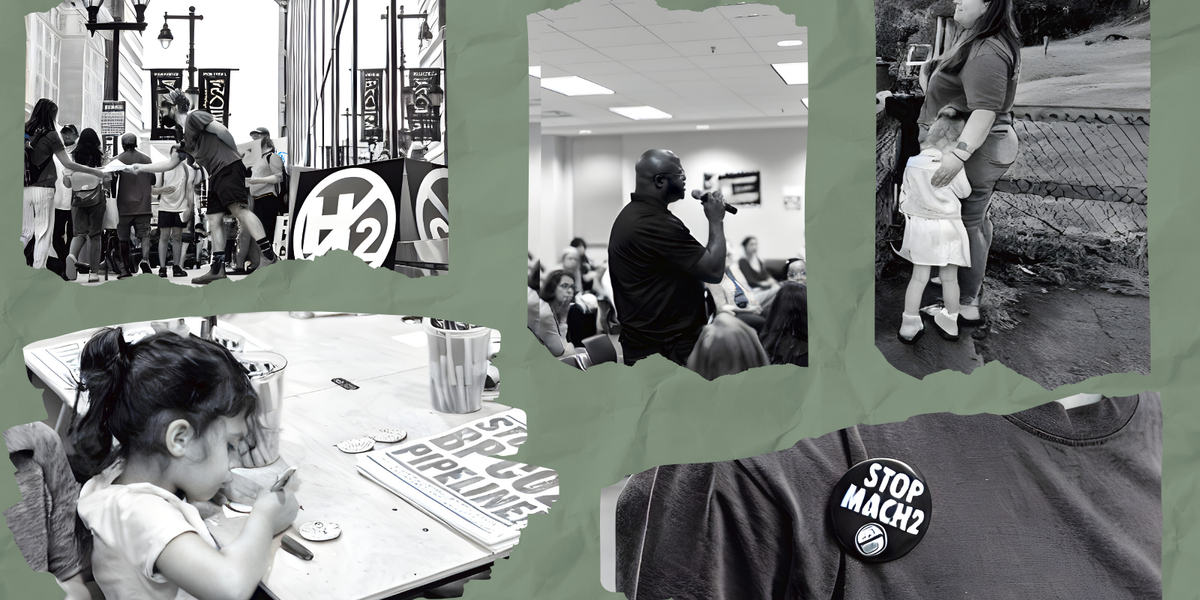shade
Urgent tree planting needed in underprivileged urban areas
A new initiative aims to improve air quality and reduce heat in urban communities of color by increasing tree canopy coverage.
In short:
- A volunteer group regularly plants trees in NYC's Soundview Park, benefiting local wildlife and the community.
- Research indicates tree planting in areas like NYC's Hunts Point could significantly reduce heat-related deaths and illnesses.
- Minority neighborhoods in the U.S. have significantly less greenery, contributing to higher temperatures and health risks.
Key quote:
"It'll be significantly hotter in one place than the other because of the investment [in green spaces] that one has gotten and the other has not."
— Victoria Sanders, climate and health programs manager at the NYC Environmental Justice Alliance
Why this matters:
Increasing tree cover in cities is especially important because of the "urban heat island" effect, where buildings, roads and other infrastructure absorb and re-emit the sun’s heat more than natural landscapes such as forests and fields. By increasing shade and lowering surface and air temperatures, trees can help mitigate this effect.
Learn more: Tucson's ambitious tree planting goal aims to improve the health of residents, wildlife, and the watershed.
Medellín's urban forest miracle
Medellín transforms its urban landscape with green corridors, showing the world how to beat urban heat.
In short:
- Medellín's Green Corridors project has significantly lowered the city's temperature by planting trees and creating green spaces.
- This initiative has not only cooled the city by 2°C in three years but also improved air quality and increased biodiversity.
- The effort was led by the community, with support from city officials, and is seen as a model for other cities facing the heat island effect.
Key quote:
“Medellín grew at the expense of green spaces and vegetation. We built and built and built. There wasn’t a lot of thought about the impact on the climate. It became obvious that had to change."
— Pilar Vargas, a forest engineer working for City Hall
Why this matters:
Medellín's success in cooling its urban environment demonstrates a sustainable way to tackle the urban heat island effect, improving living conditions and health outcomes. As cities worldwide grapple with rising temperatures, this Colombian city's approach offers a blueprint for urban resilience and environmental stewardship.
Be sure to read about Tucson's ambitious tree planting goal aims to improve the health of residents, wildlife, and the watershed.
Los Angeles' shade disparity reflects deeper social inequities
A new grant-funded program aims to plant trees in Los Angeles' underserved neighborhoods, addressing the stark inequity in tree canopy coverage linked to health and climate resilience.
In short:
- Boyle Heights is launching a robust tree-planting initiative to combat the area's severe shortage of tree canopy, which is as low as 5% in some neighborhoods compared to 40% in wealthier areas.
- The endeavor is supported by the California Natural Resources Agency and seeks to improve community health outcomes and environmental sustainability.
- The city's goal is to create a more equitable distribution of green spaces, acknowledging the crucial role of urban forestry in the well-being of its residents.
Key quote:
“There’s a tremendous amount of evidence that in areas with adequate greening, we have reduced attention deficit disorder, reduced cardiovascular illness and respiratory illness, less depression and better pregnancy outcomes.”
— Michael Jerrett, professor of environmental health sciences, UCLA
Why this matters:
Equitable tree distribution is more than an aesthetic issue; it's a matter of public health and social justice. In the face of rising temperatures, enhancing tree coverage in underprivileged areas is vital to improving overall health outcomes and fostering resilience against the climate crisis.
Too often, analysis and problem solving takes place removed from real people’s lives, while problems at the ground level are misunderstood or ignored.
Catalyst Miami, and many other community-based nonprofits, are working to change that.
How can buildings beat the heat in a desert city? Blend ancient and modern
Miami-Dade County mulls the strictest workplace heat rules in the U.S.
What mapping every tree in New York City reveals
As California gets drier, solar panels could help farms save water
Agrivoltaics—or on-farm solar arrays—are still rare in California, but experts say the shade they provide could be a game-changer in a state where many farms are struggling to plan for a future with limited groundwater.



















